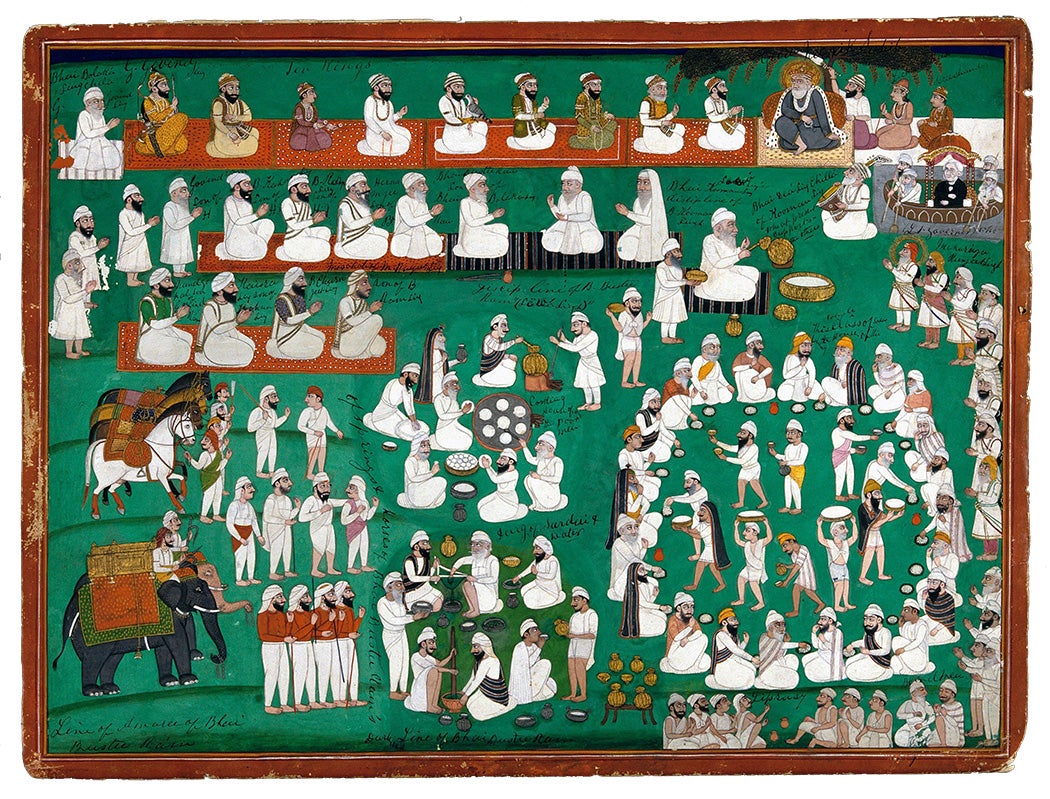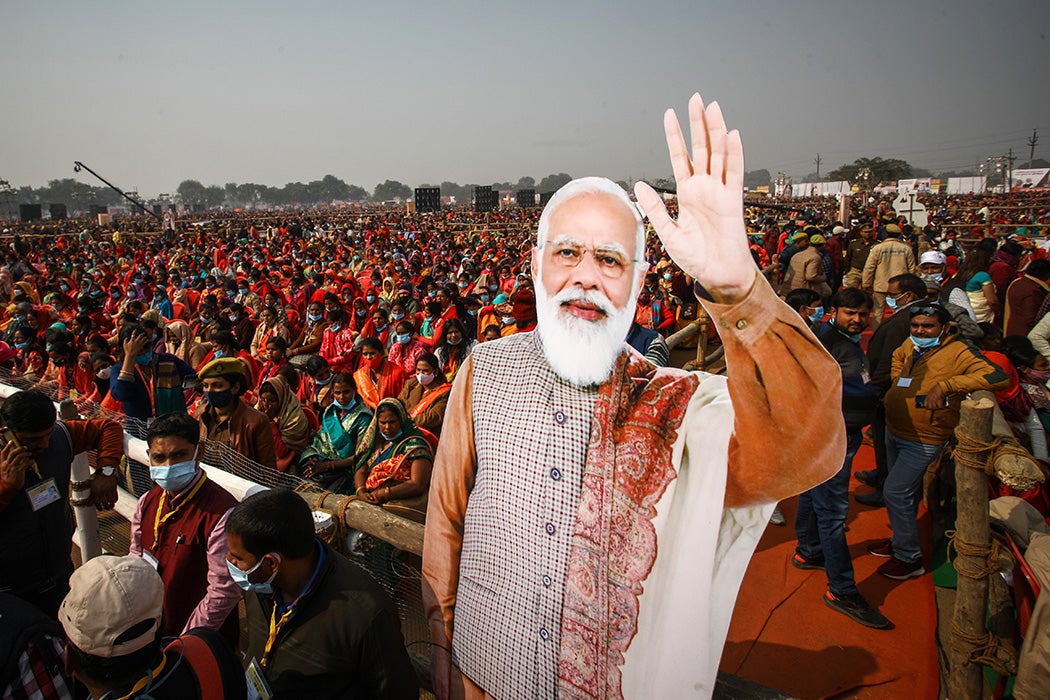Indian Prime Minister Narendra Modi’s style is “business-ascetic,” but he is leaning rather more “ascetic” than “business” these days, adopting the wardrobe and coiffure, and the gravity, of the ascetic teacher, or guru, understood as the bearer and promulgator of weighty tradition—a brand that might seem odd for the leader of one of the world’s fastest growing economies.
Since coming to power in 2014, Modi’s Bharatiya Janata Party (BJP), or Indian People’s Party, has sought to show that India’s path to prosperity and power, at home and abroad, lies in embracing its authentic and grand Hindu past, the legacy of which has been suppressed by imperialism and, in turn, secularism. What this path to power looks like is difficult to articulate, even for the BJP—save, that is, for launching a public relations campaign. With all the clarity and gravity that such campaigns entail, the BJP sought to promote India as a vishwaguru, a guru or teacher to the world.
So far, the leaders of the BJP have studiously avoided wading into the policy prescriptions that would transform India into a guru for the world, insisting instead upon recalling India’s glorious classical past. Seizing upon the dearth of detail, critics have pointed out the incoherence, implausibility, and absurdity of such a vision, noting that, in practice, the BJP has enhanced some of the most pernicious elements of control employed by the colonial regime it despises. Modi’s affectation of the style of an ascetic guru, as critics have noticed, might be an attempt to recruit an actual guru to the cause of India’s spiritual world leadership: Narendranath Datta, perhaps better known by his monastic title, Swami Vivekananda.

But there is another tradition of monastic power and governance that remains little examined and discussed. Indeed, the body of historical evidence showing that monastic gurus considered themselves sovereign and independent of transient political authority is too large to be ignored. The BJP has successfully enlisted a number of monastic gurus who have enthusiastically signed onto the BJP’s erasure of this alternative tradition of power. Most famous among the recruits is Yogi Adityanath, the monastic head of the Gorakhpanthi monastery (mutt/maṭha) in Uttar Pradesh, who has been involved in electoral politics for more than two decades, becoming Chief Minister of the state in 2017.
The India-focused art historian Tamara Sears, in her article, “Constructing the Guru: Ritual Authority and Architectural Space in Medieval India,” provides a compelling picture of what it meant for a guru, the head of a monastic order, to be sovereign in medieval India. Sears focuses on the monastic complex, or maṭha, at Chandrehe, in present-day Madhya Pradesh, constructed in 973 by Prabodhashiva, a guru of the Mattamāyura order of Shiva-worshipping ascetics. She explores the myriad dimensions of monastic sovereignty—economic, infrastructural, ritual, pedagogical, devotional, and material—and explains how it reshuffled the hierarchies of power. Eschewing the kings’ power and unquenchable thirst for conquest, the guru constituted his power subjectively, ensuring the material and spiritual welfare of his pastorate. Consequently, “temples and maṭhas [monasteries] operated as landholding overlords… thus integrating religious, political, and economic networks that formed the basis for state formation.”
The medieval maṭha was monastic power made concrete: through teaching and ritual practices, gurus directed the ethical self-fashioning of their subjects and deployed the considerable monastic assets—inalienable tax-free land, tax revenue, trading privileges, human capital—to support the pastorate.
Weekly Newsletter
M. S. Golwalkar, an early leader of the Rashtriya Swayamsevak Sangh (R.S.S., the activist cadre of the Hindu nationalist syndicate), sought to institutionalize this ascetic mode of power and make it politically viable. He conceived of the R.S.S. itself as a guru, forming its activist subjects (pracharaks) through ascetic practice while simultaneously marshalling and mobilizing the diverse monastic orders in service of the singular goal of realizing a Hindu nation. It is then no surprise that Modi, who cut his political teeth as an activist in the R.S.S., should resort to the rhetoric and regalia of monastic power in signaling Hindu supremacy.
In his most recent guise, however, Modi has signaled a subtle shift from Golwalkar’s conception of the R.S.S. as a corporate guru to styling himself as a sovereign guru of the ascetic variety. This effort to flatten and appropriate the diverse histories of monastic power has found occasional resistance from monastic gurus themselves, but we historians remind us of the messiness of the past, no matter the discomfiture it may cause in the present.







